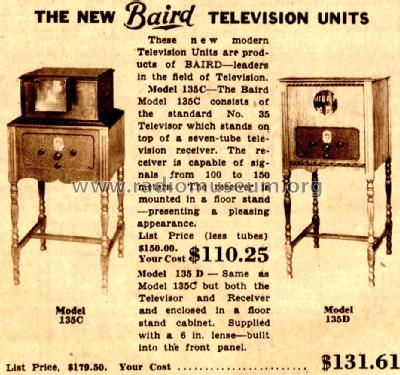

As television development gained momentum, the 1930's saw the introduction of electronic models. Having previously been transmitted separately, it wasn't until 1930 that sound and vision began to be transmitted simultaneously.
BAIRD TELEVISOR FOR SALE TV
This same year, the BBC began to use Baird's company for its TV broadcasts. Selling for approximately 26 pounds, they were at the time relatively expensive. The following year Baird's technology was mass produced for public sale, releasing the first television receiver 'The Televisor', made by Plessey in England.

Through the BTDC the first transatlantic broadcast was transmitted from London and New York in 1928, and the first live transmission of the Epsom Derby. This early system consisted of a revolving shutter and light sensitive cell, before a large wooden revolving disc containing lenses.īy 1927 he succeeded in transmitting content across a 438 mile telephone line between London and Glasgow, before setting up Baird Television Development Company (BTDC) the same year. Though clearly still in basic form, with blurred images, this demonstration outlined the potential of Baird's mechanical technique. Through this demonstration, Baird manipulated the head of a ventriloquists' doll, displaying an image measuring only 3 ½in x 2in. By the following year, he had achieved successful transmission of recognisable human faces, in pictures with light and shade.Īs a result, on 26th January 1926, Baird held a public demonstration in Soho, London, before members of the Royal Institute and a journalist from The Times.

The creation of the mechanical television began in 1924, when Baird managed to transmit a flickering image across 10 feet to accompany sound.


 0 kommentar(er)
0 kommentar(er)
